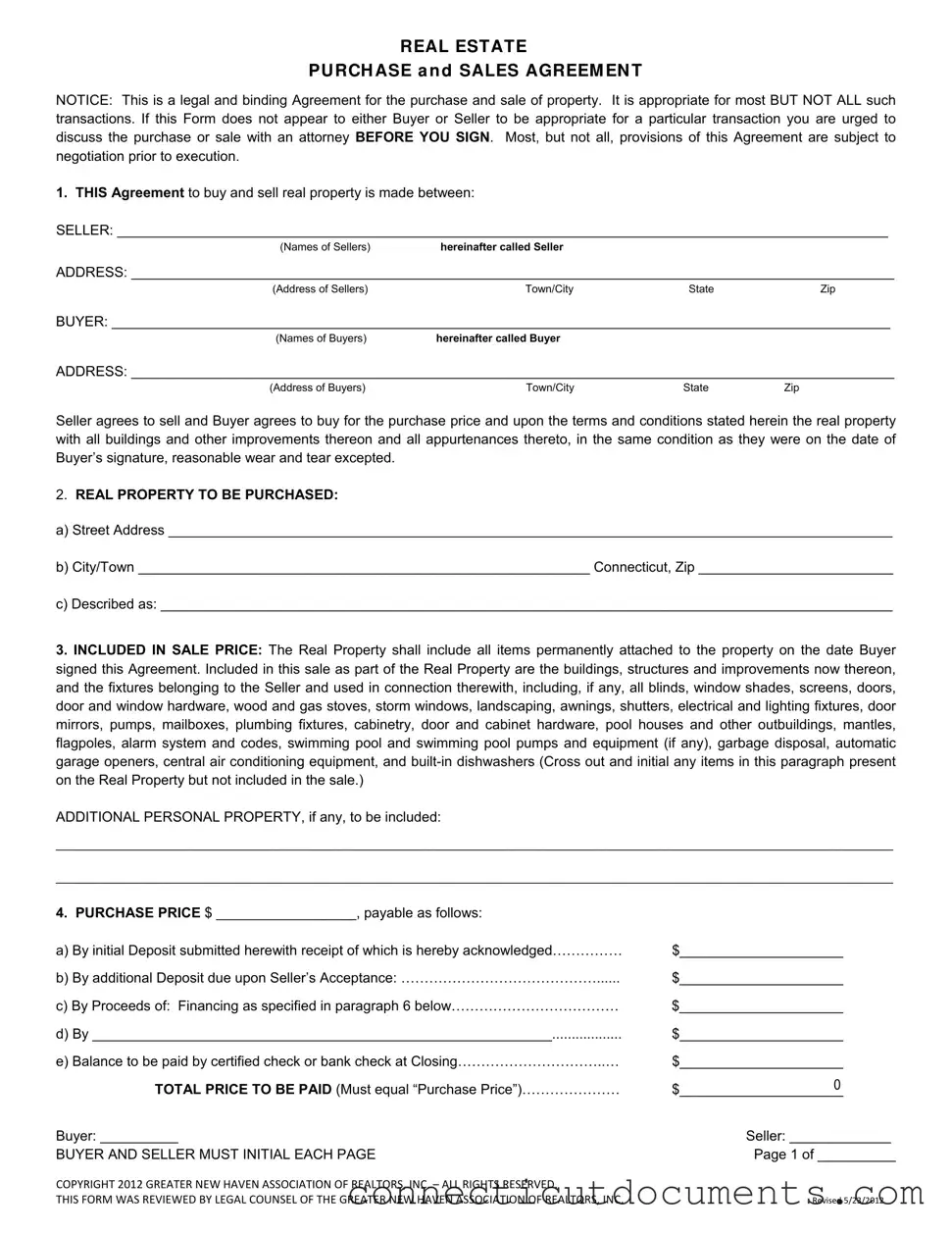What is the Connecticut Real Estate Purchase and Sales Agreement?
The Connecticut Real Estate Purchase and Sales Agreement is a legal document used for buying and selling property in Connecticut. It outlines the terms and conditions of the sale, including the purchase price, property description, and the responsibilities of both the buyer and seller. This agreement is binding once signed, so it's important to ensure it fits the specific transaction. If you have any doubts, consulting an attorney before signing is advisable.
What should I include in the Purchase Price section?
The Purchase Price section details how the buyer will pay for the property. It includes the total price and breaks it down into deposits and any financing. Each payment method should be clearly stated, including the initial deposit, any additional deposits, and the balance due at closing. Make sure the total matches the purchase price to avoid confusion.
What happens if the Buyer cannot secure financing?
If the buyer is unable to obtain financing as outlined in the agreement, they must notify the seller in writing by a specific date. If this happens, the agreement becomes null and void, and any deposits made will be returned to the buyer. It's crucial for the buyer to act quickly and diligently in seeking financing to protect their interests.
What is the Inspection Contingency?
The Inspection Contingency allows the buyer to have the property inspected before finalizing the sale. The buyer must notify the seller of any concerns about the property's condition within a specified time frame. If the buyer is not satisfied, they can choose to terminate the agreement. This section helps protect the buyer by ensuring they are aware of any issues before closing.
What is the significance of the Lead-Based Paint disclosure?
If the property was built before 1978, federal law requires the seller to allow the buyer to inspect for lead-based paint hazards. The buyer has a 10-day period to conduct this inspection. If lead-based paint is found, the buyer must notify the seller, and both parties can negotiate a solution. If the buyer waives this right, they cannot later raise concerns about lead-based paint.
What should I know about the Closing Process?
The closing process is when ownership of the property is officially transferred from the seller to the buyer. The buyer typically receives possession on the closing date. The seller must maintain the property in good condition until closing. A final walk-through inspection is recommended within 48 hours before closing to ensure everything is as agreed. All financial adjustments, such as taxes and fees, will be settled at this time.
